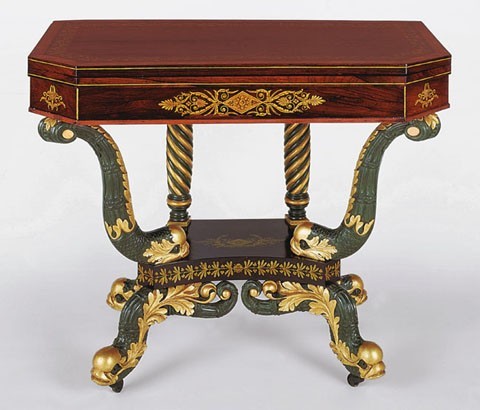
Card table attributed to Deming and Bulkley, New York City, ca. 1825. Rosewood and satinwood veneer with white pine. H. 30", W. 37 1/8", D. 18 1/2". (Private collection; photo, Gavin Ashworth.)
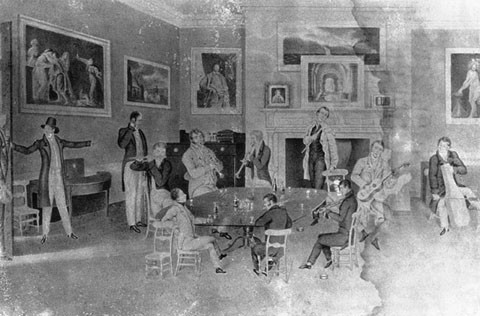
Thomas Middleton, Friends and Amateurs in Musick, Charleston, 1827. Wash drawing with touches of white on paper. (Courtesy, Gibbes Museum of Art/Carolina Art Association, gift of Henry Cheves.) This 1827 drawing of Arthur Middleton’s house depicts an elite Charleston interior with its large painting collection and inherited furniture from earlier periods. The rush-seated fancy chairs and sideboard are typical of northern furniture shipped to Charleston from 1810 to 1840.
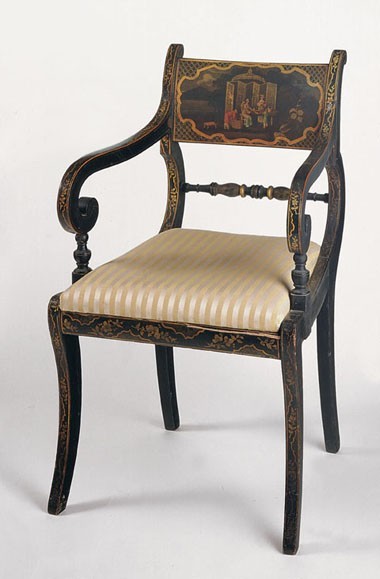
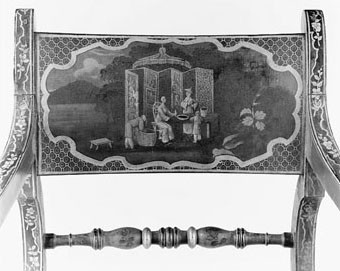
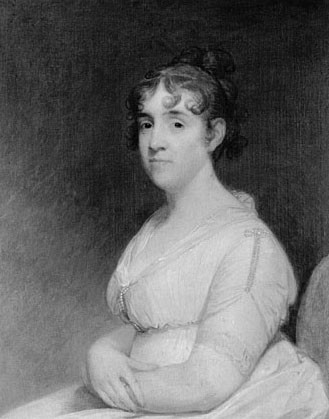
Gilbert Stuart, Sarah I’on Lowndes,Washington, D. C., ca. 1803. Oil on canvas. (Courtesy, Gibbes Museum of Art/Carolina Art Association, bequest of Mrs. Royal Phelps Carroll.)
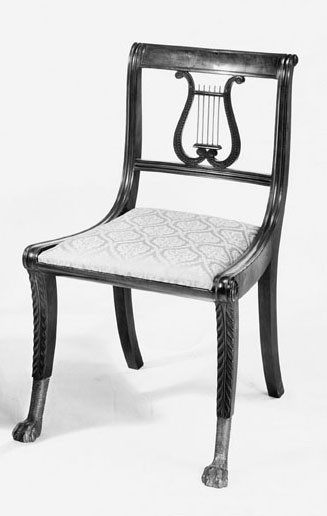
Side chair attributed to Duncan Phyfe, New York City, ca. 1815. Mahogany; secondary woods and dimensions unrecorded. (Courtesy of Sack Heritage Group.) www.sackheritagegroup.com
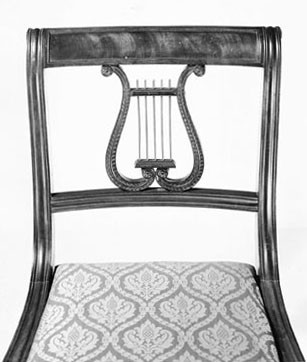
Detail of the carved lyre back of the side chair illustrated in fig. 6. (Courtesy of Sack Heritage Group.) www.sackheritagegroup.com
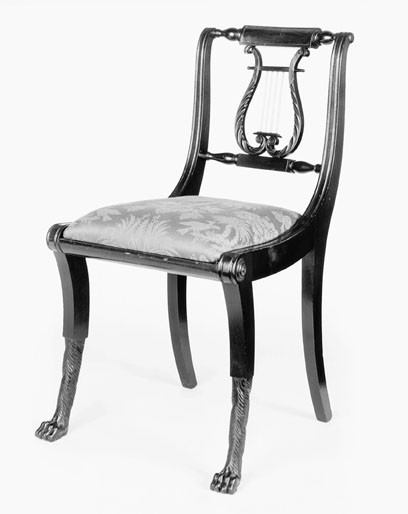
Side chair, New York City, ca. 1815. Mahogany with ash. H. 33", W. 16 3/4", D. 22". (Private collection; photo, Gavin Ashworth.)


Card table attributed to Charles Honoré Lannuier, New York City, ca. 1815. Mahogany; secondary woods and dimensions unrecorded. (Private collection.)
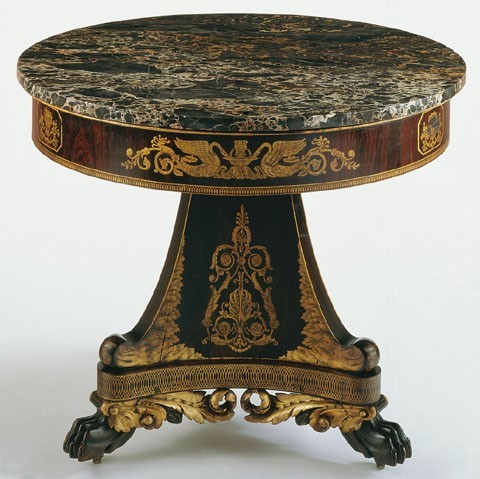
Center table by Deming and Bulkley, New York City, 1828. Rosewood veneer with white pine and ash. H. 30 1/2", Diam. 36". (Private collection; photo, Gavin Ashworth.)
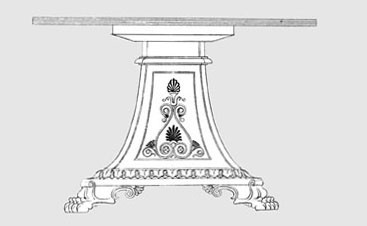
Design for a round monopodium or table illustrated on pl. 39 in Thomas Hope, Household Furniture and Interior Decoration (1807). (Courtesy, Winterthur Museum.)

Detail of the freehand gilded decoration on the pedestal of the center table illustrated in fig. 11. (Photo, Gavin Ashworth.)

Design for a center table illustrated in Rudolph Ackermann’s Repository of Arts, Literature, Commerce, Manufactures, Fashions and Politics, May 1825, pp. 305–6. (Courtesy, Winterthur Museum.)
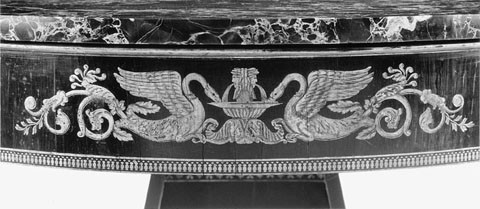
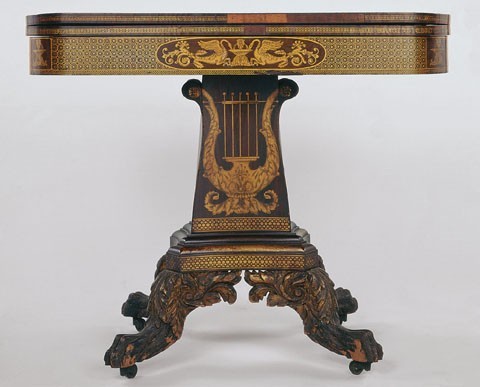
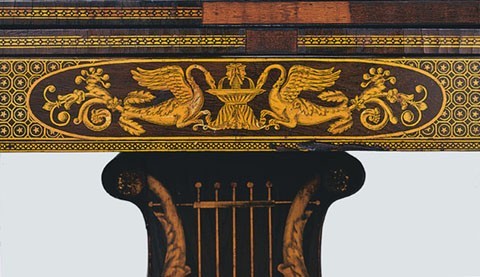
Detail of the gilded swan decoration and cell-pattern diapering on the skirt of the card table illustrated in fig. 16. (Courtesy, Charleston Museum, Charleston, South Carolina; photo, Gavin Ashworth.) http://charlestonmuseum.org

Edward Greene Malbone, Colonel Thomas Pinckney, Charleston, ca. 1804. Watercolor on ivory. (Courtesy, Gibbes Museum of Art/Carolina Art Association.)
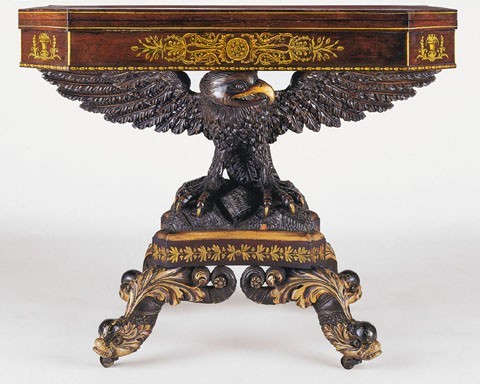
Card table attributed to Deming and Bulkley, New York City, ca. 1825. Rosewood veneer with white pine, tulip poplar, and oak. H. 29 1/4", W. 37 1/4", D. 18 3/4". (Courtesy, The Charleston Museum, Charleston, South Carolina; photo, Gavin Ashworth.) http://charlestonmuseum.org
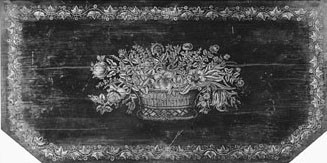
Detail of the grapevine border and flower basket on the top of the card table illustrated in fig. 19. (Courtesy, The Charleston Museum, Charleston, South Carolina; photo, Gavin Ashworth.) http://charlestonmuseum.org
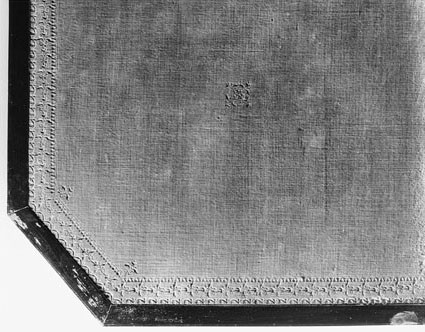
Detail of the velvet playing surface on the card table illustrated in fig. 19. (Courtesy, The Charleston Museum, Charleston, South Carolina; photo, Gavin Ashworth.) http://charlestonmuseum.org

Card table illustrated in fig. 1 opened to the original velvet playing surface. (Photo, Gavin Ashworth.)
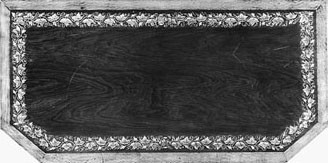
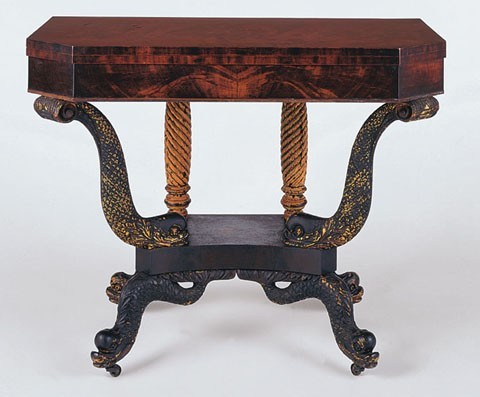
Card table attributed to Deming and Bulkley, New York City, ca. 1825. Mahogany veneer with white pine, beech, oak, and poplar. H. 283/4", W. 37 1/4", D. 18 3/4". (Courtesy, The Charleston Museum, Charleston, South Carolina; photo, Gavin Ashworth.) http://charlestonmuseum.org
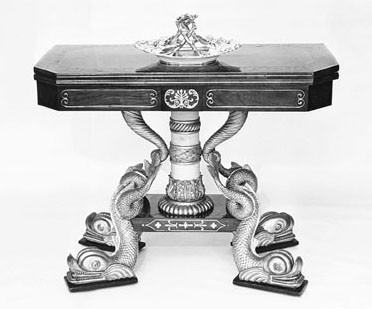
Card table, English, ca. 1813. Rosewood veneer with brass inlay; secondary woods and dimensions unrecorded. (Courtesy, Royal Pavilion, Brighton, England.)

Recamier attributed to Deming and Bulkley, New York City, ca. 1830. Rosewood veneer and mahogany with oak, ash, and poplar. H. 38 1/2", W. 90 1/2", D. 25". (Courtesy, The Charleston Museum, Charleston, South Carolina; photo, Gavin Ashworth.) http://charlestonmuseum.org

Detail of the crest rail on the recamier illustrated in fig. 26. (Courtesy, The Charleston Museum, Charleston, South Carolina; photo, Gavin Ashworth.) http://charlestonmuseum.org
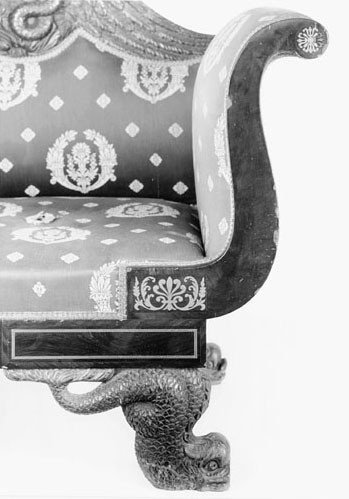
Detail of an arm, foot, and brass inlay on the recamier illustrated in fig. 26. (Courtesy, The Charleston Museum, Charleston, South Carolina; photo, Gavin Ashworth.) http://charlestonmuseum.org
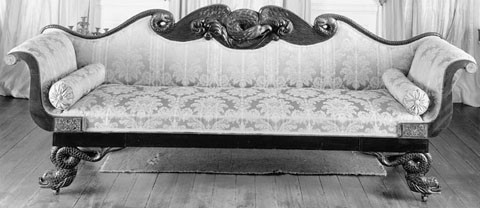
Sofa, New York City, ca. 1830. Mahogany and mahogany and rosewood veneer; secondary woods unrecorded. H. 38", W. 99", D. 25 1/2". (Private collection; photo, Gavin Ashworth.)
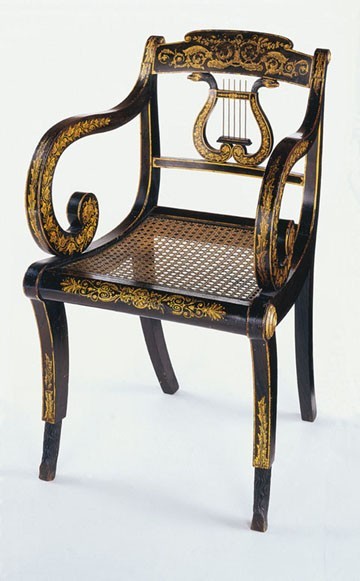
Armchair by Deming and Bulkley, New York City, 1821. Maple. H. 33", W. 20 1/2", D. 17 1/2". (Courtesy, St. John’s Lutheran Church; photo, Gavin Ashworth.)
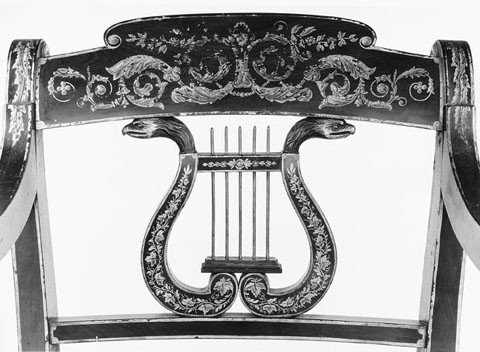
Detail of the grapevine border and carved eagle heads on the lyre back of the armchair illustrated in fig 30. (Photo, Gavin Ashworth.)
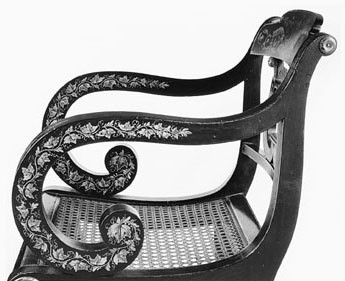
Detail of the grapevine border on the arms of the armchair illustrated in fig. 30. (Photo, Gavin Ashworth.)
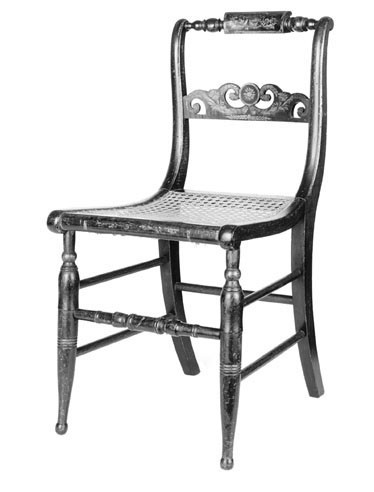
Painted side chair attributed to Deming and Bulkley, New York City, ca. 1825. Maple. H. 33 3/4", W. 16 3/4", D. 21 1/2". (Private collection; photo, Gavin Ashworth.)
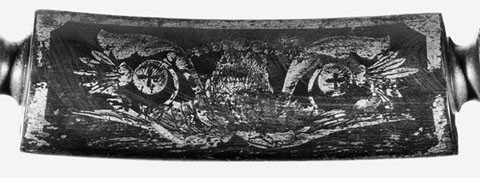
Detail of the freehand gilded eagle on the crest rail of the side chair illustrated in fig. 33. (Photo, Gavin Ashworth.)
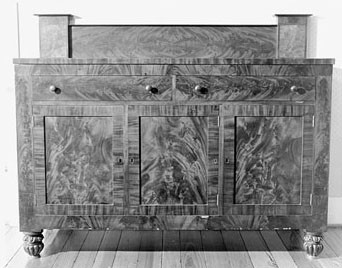
Sideboard by Deming and Bulkley, New York City, 1825. Mahogany veneer with tulip poplar and white pine. H. 52 1/2", W. 66 3/16", D. 24 5/8". (Private collection; photo, Museum of Early Southern Decorative Arts.)
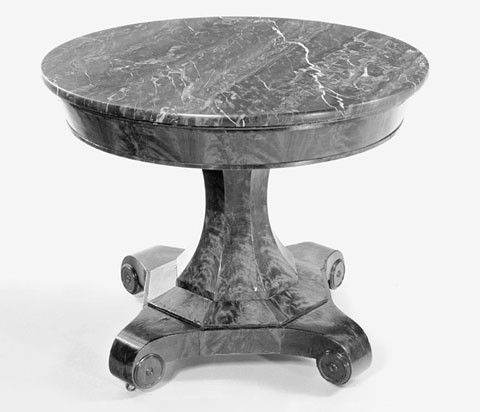
Center table with partial label by Deming and Bulkley, New York City, ca. 1835. Mahogany veneer with ash and white pine. H. 29 1/2", Diam. 35 3/4". (Private collection; photo, Museum of Early Southern Decorative Arts.)
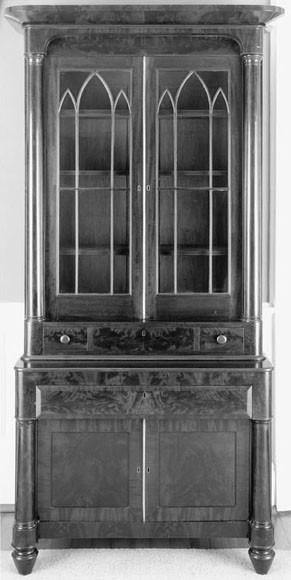
Secretary-and-bookcase with partial label by Deming and Bulkley, New York City, ca. 1835. Mahogany veneer with cedrela, white pine, and tulip poplar. H. 87 1/2", W. 73 1/2", D. 48 1/2". (Private collection; photo, Gavin Ashworth.)
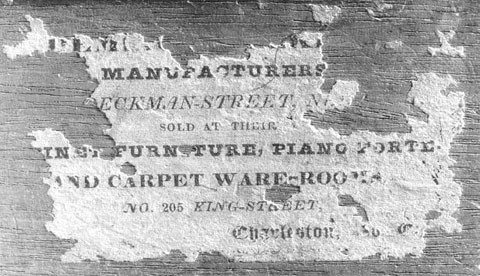
Detail of the Deming and Bulkley label on the secretary-and-bookcase illustrated in fig. 37. (Photo, Gavin Ashworth.)
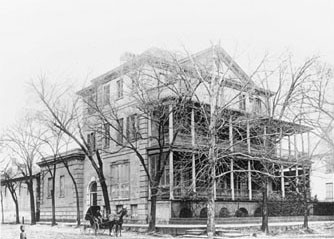
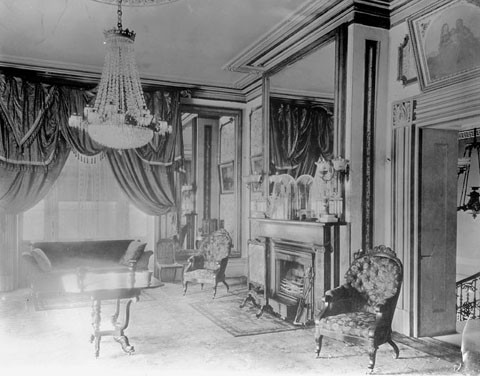
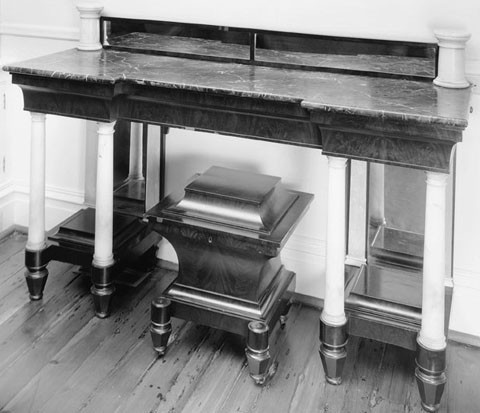
Sideboard and cellaret attributed to Deming and Bulkley, New York City, ca. 1835. Mahogany veneer with white pine. H. 48 1/2", W. 73 1/2", D. 25". (Private collection; photo, Gavin Ashworth.)
